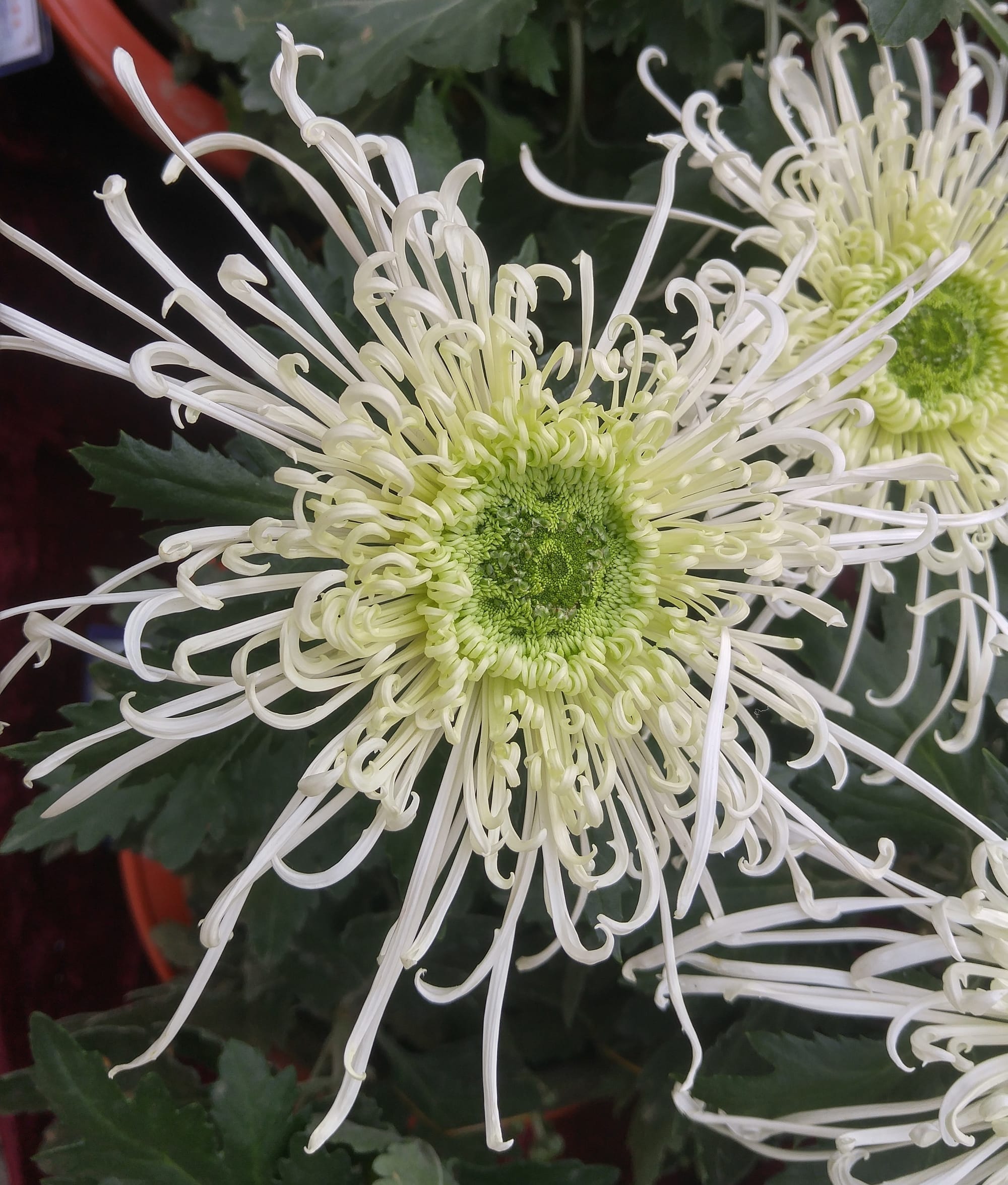My First Year Growing Heirloom Chrysanthemums
These Captivating Flowers Are Stunning, but They Come with Pros and Cons

I started noticing posts on Instagram and Facebook featuring these amazing, spidery, otherworldly flowers—so unique they almost seemed AI-generated. Naturally, I had to have some for my own garden. That, however, turned into quite an ordeal. There are only a handful of sellers, and they’re either perpetually sold out or never seem to have the “good ones” in stock.

I remember one of the top sellers of heirloom chrysanthemums required buyers to jump through a series of hoops just to be considered. I had to sign a contract promising to manage diseases like white rust diligently. Growing these plants felt almost intimidating—I worried one of my chrysanthemums might develop a fungus, go unnoticed, spread to my other plants, and spark a full-blown agricultural disaster in the Midwest. I even imagined the Feds stepping in to contain it. Well, that escalated quickly.
Then, there was the essay. You had to write to the seller, convincing them you were responsible enough to handle these challenges. After all that, you were left waiting and hoping to be selected—only to discover their supplies were so limited that being chosen was akin to winning the lottery.
As for me? I was never even considered. No notification, no chance to buy. But I didn’t give up. I eventually stumbled upon a completely random seller who had enough of the varieties I wanted. Without hesitation, I placed my order and finally got my chrysanthemums.

My little plants would have arrived in late March or early April. I’d carefully maintain them indoors until the spring weather was reliably warm enough for outdoor planting. What I eventually learned about heirloom chrysanthemums, though, is that they grow just like regular chrysanthemums. And you know why? Because they are regular chrysanthemums—just variations of the same plant.
They don’t really hit their blooming stride until early November. That means for 7 to 8 months of the year, they’re basically small green shrubs. Sure, they do extend your flower-growing season by a couple of weeks overall, but by the time they bloom, it’s often too chilly to spend much time in the garden. At that point, most gardeners are ready to shut things down and start planning for the next season.
While heirloom chrysanthemums can withstand a couple of weeks of cold weather—conditions that would end most other flowering plants—I began to question whether they were worth the effort. After waiting months, was it really worth it for just a few weeks of blooms?

I should mention that in person, these flowers are every bit as stunning as the photos suggest. Their blooms are abundant, durable, and absolutely beautiful. However, I’ve realized that color plays a crucial role when it comes to heirloom varieties. If I grow them again next year, I’ll focus on bright, cool tones rather than traditional autumn hues.
I had a similar reaction in the past with standard chrysanthemums. The autumn colors—gold, rust, orange, and reddish-brown—just didn’t stand out as much or feel as exciting. In contrast, a purple spider heirloom chrysanthemum not only stuns with its unique bloom shape but also grabs attention with its vibrant color. It has the same dramatic impact as a cactus dahlia. Next time, I’ll lean into shades like purples, pinks, corals, bright yellows, and white for a more striking display.

The chrysanthemums grew in most areas I planted them, but they thrived dramatically better in spots with rich, loose, fine-textured soil. In areas with larger clumps of dirt or heavier clay, they struggled—often staying small with only a few blooms. For next year, my plan is to plant fewer overall but focus on placing them where I know they’ll do well. Unlike zinnias, which seem to grow beautifully no matter where they’re planted, these flowers are a bit pickier about their conditions.
Another consideration is timing. By the time chrysanthemums bloom, most of your other garden flowers have browned, fallen over, or completely died. To avoid the awkward gaps throughout your garden, it’s best to plant chrysanthemums front and center in a large, cohesive mass, rather than scattering them among decaying zinnias or dead dahlias that haven’t yet been cleared out. However, this also means that for 7–8 months of the year, the prime spots in your garden will just be filled with green bushes—not ideal.
That said, I do think these flowers are worth growing and keeping around, especially if you make a few adjustments to their placement and choose colors that really shine in your garden.
© Copyright Terry Aley
The Aley Acres seed shop on Etsy.
Dahlias, Notes from a Gardener book on Amazon.
Floral Art and Landscape Painting Etsy shop.
TikTok, some gardening posts.
